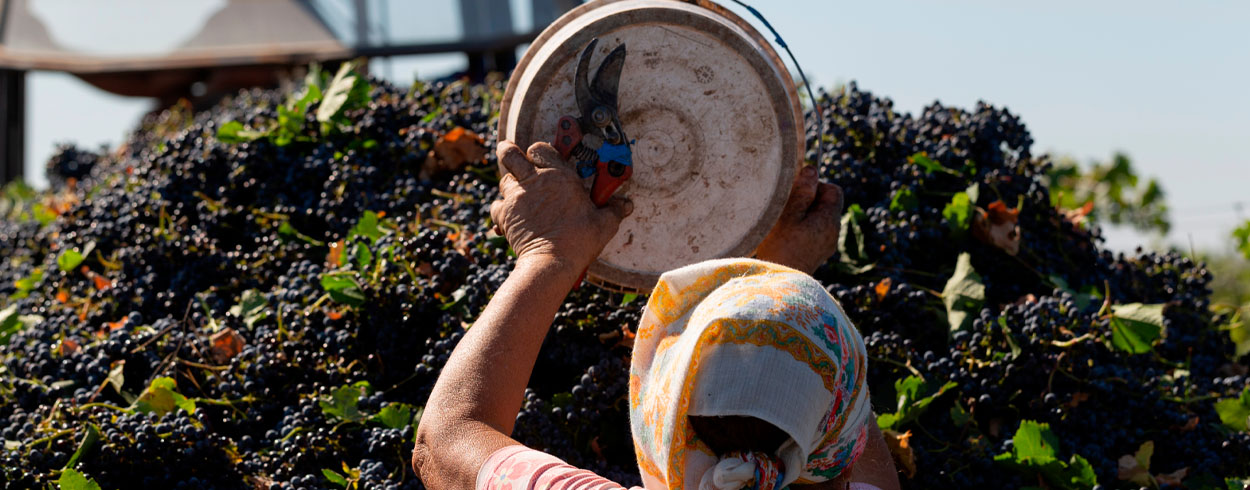
Production of alcoholic beverages puts a strain on the environment
The greatest environmental impacts of the production of wine, beer and strong alcoholic beverages are caused by agriculture, the manufacture of beverage packaging, and the energy consumed at various stages of the production process.
The environmental impacts of wine and beer are caused by packaging
In wine and beer production, the greatest environmental effects are caused by the manufacture of beverage containers. Beverage packaging accounts for almost half of all environmental impacts – 46% for wine and 49% for beer.
The greatest single factor contributing to this is the manufacture of glass bottles, as glass production requires an extremely high temperature of about 1,400–1,600 ˚C, which requires a lot of energy to achieve. Read more why beverage packing material has a significant climate impact.
After packaging, the greatest environmental impacts of wine production are caused by energy and fuel consumption during the grape cultivation process. The amount of strain put on the environment will depend on the type and quantity of the fuel used by tractors and other vineyard equipment. For example, the use of renewable energy will reduce the environmental impact. Energy is also required for pumping irrigation water and treating wastewater, frost protection, cooling or heating production premises, illumination, and cooling wine transfer pumps and production tanks.
After packaging, the greatest environmental impacts of beer production are caused by energy and fuel consumption at various stages of the process. Energy is consumed during the beverage production process, to maintain production premises, and when transporting both finished products and ingredients, such as grain.
The production of strong alcoholic beverages consumes a lot of energy
The greatest environmental impacts during the lifecycle of strong alcoholic beverages (49%) are caused by energy consumption at distilleries, and particularly during the distilling process.
The manufacture of packaging, typically glass bottles, has the second greatest environmental impact. Packaging accounts for 20% of the environmental impacts of strong alcoholic beverages.
Transportation can account for a surprising proportion of the environmental impact of beverage production
International transport only accounts for an average of just under 3% of the environmental impact of alcoholic beverage production. The majority of beverages imported into Finland are transported by ship and truck. Beverages may also be transported by airfreight, which is the least environmentally friendly option.
Packaging also affects transport emissions, as heavy glass bottles will increase the environmental impact of transport.
Transport emissions can be reduced by, for example, transporting beverages closer to the destination country in large tanks aboard ships and only packaging them for sale once they have arrived at the destination. The environmental impact of traditional glass bottles can also be reduced by replacing them with lightweight glass bottles, PET plastic bottles or cardboard cartons.
Recycling reduces environmental impacts
The manufacture of beverage packaging is the most significant single factor in the environmental impact of alcoholic beverage production. It is therefore important for valuable packaging material to be reused.
You can return deposit bottles and aluminium cans to any recycling machine in Finland. Other material and non-deposit packaging should be sorted into different waste fractions. Read more about sorting and recycling beverage packaging.
Collaboration seeks ways to reduce environmental impacts
Alko is working with its suppliers and other Nordic alcohol monopolies to find ways of reducing the environmental effects of beverage production. We aim to provide our customers with a broad and extensive selection of beverages that have been produced in an environmentally friendly manner.
The environmental impacts of various alcoholic beverages were examined in a study commissioned by the Nordic alcohol monopolies in 2016. Read a summary of the report and the full report.
 Chat
Chat